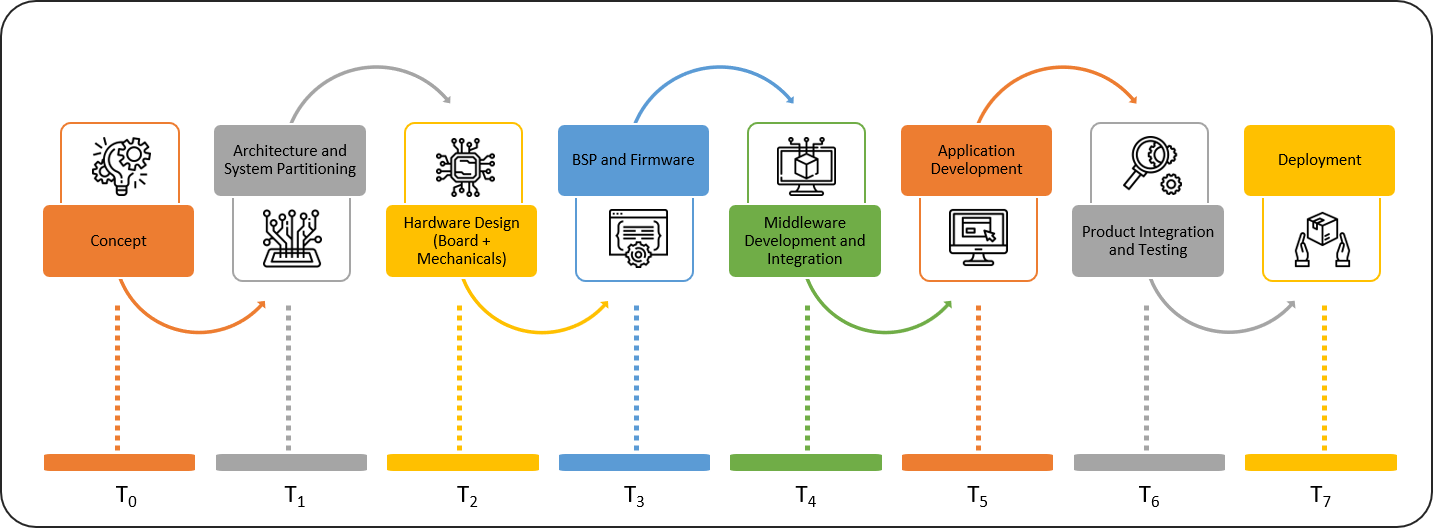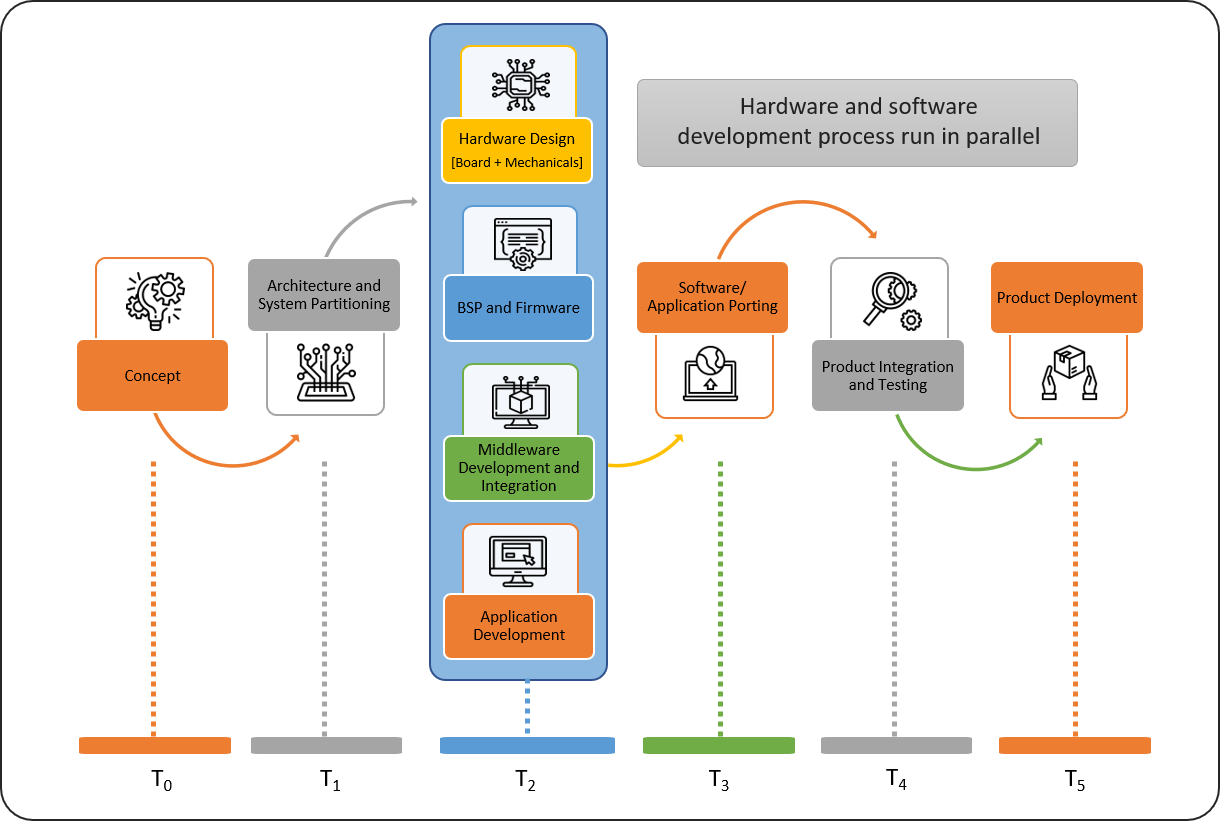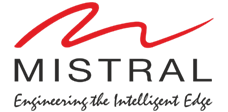Product Development Platforms – Why we need them?
In today’s competitive tech landscape, Product Development Platforms play a critical role in enabling fast, efficient, and synchronized design of hardware and software. These platforms accelerate embedded product development by allowing parallel development processes, reducing time-to-market, and helping innovators stay ahead of the curve.
What are Software and Product Development Platforms?
Whenever a semiconductor company releases a new processor or System on Chip (SoC), they simultaneously launch associated Poduct Development Platforms (SDPs) or Software Development Kits (SDKs). These Development Platforms are typically physical boards or PCBs that integrate the SoC, essential peripheral interfaces, expansion connectors, and support for debugging.
Product Development Platforms come bundled with Board Support Packages (BSPs), often based on popular operating systems and frameworks. These platforms serve as a reliable foundation for engineers, students, and developers to explore, experiment, and rapidly develop solutions around the latest SoCs.
By leveraging these platforms, product developers can kick-start the hardware and software development lifecycle in tandem, reducing dependency cycles and ensuring faster prototyping and deployment.
Accelerating Embedded Product Development
The primary goal of Product Development Platforms is to familiarize developers with SoC capabilities while offering an ideal launchpad for custom product design. A robust Development Platform allows engineers to:
- Evaluate SoC features and benchmark performance
- Rapidly prototype software and hardware
- Debug and validate code in real-time
- Minimize development risks
- Speed up time-to-market
With ready-to-use Development Platforms, teams can transition quickly from concept to prototype designing, testing, and refining with reduced friction.

Stages in the Product Development Process
Product Development Platforms help the user benchmark their software, prototype applications and debug the software. When using product development platforms, the development process will look as shown in the figure below. Development platforms are called with different names like Software Development Platforms, Evaluation Modules, Software Development Kits, Industrial Development Kits, etc. depending on the application they are intended for or on the silicon vendor releasing them. Software Development Platform also comes in different variants and with different interfaces like with/without Display, large all-in-one boards that run proprietary operating systems and a host of development tools; or combination of a baseboard with multiple add-on boards catering to different applications.
Stages in the Product Development Process
Using Product Development Platforms, the typical embedded product development cycle includes:
- Evaluation – Understand processor capabilities and select suitable development tools
- Prototyping – Use reference designs or SOMs to build early versions
- Development – Build and test embedded software and hardware concurrently
- Integration – Merge hardware and software for the final product
- Deployment – Launch a market-ready solution after validation
These Development Platforms are also known by other names like Evaluation Modules, Industrial Development Kits, or simply Software Development Platforms, depending on vendor preferences and use cases.
Variants include:
- Platforms with or without displays
- Compact SoM-based systems
- Modular baseboards with add-on expansion boards
- All-in-one solutions supporting proprietary or open-source operating systems

Product Development stages using Software Development Platforms
Designing using Software Development Platform
Let’s look at an example. Mistral has worked with several silicon manufacturers bringing out development platforms and SoM Modules based on their latest silicon. One of development platform, the 820 Development Kit based on Snapdragon 820 from Qualcomm. These platforms have a modular design, comprising of two boards. One is a light-weight, small footprint SOM module consisting of the SoC, Memory and the 9-axis MEMS sensor and a carrier module with all the other interfaces such as Audio, Display, Camera, USB, GigE, and a Debug UART. The two-layer design of the software development platform ensured that the customers could use the SoM Modules as a product from Mistral which gets integrated into their final product design. Wherein the Final product will have a custom design carrier card having all the necessary interfaces to be brought out from the SoM Modules.
Case Study: Braille Notetaker Modernization
Mistral collaborated with a customer to upgrade an Android-based Braille Notetaker from a single-board solution to a modular design using the 820 Nano SoM. The challenge was to retain the mechanical design while enabling higher flexibility and performance.
We modified the existing hardware, integrated connectors for the Nano SoM, and developed the embedded software in parallel on the SD820-based Development Platform. The user application was handled independently by the customer. This approach enabled rapid prototyping, seamless integration, and timely market launch underscoring the value of using a well-designed Product Development Platform.
Conclusion
Product Development Platforms provide a significant advantage by enabling embedded software to be developed, tested, and validated well before custom hardware is finalized. They help engineers optimize their solutions for the latest SoCs, reduce risk, and accelerate delivery.
By using these Development Platforms, OEMs and product developers can gain a head start over the competition, ensuring innovative, robust, and market-ready products.
Mistral offers a wide range of scalable, production-ready Software Development Platforms, Product Reference Designs, and Evaluation Kits based on leading silicon technologies. These platforms serve as essential tools for rapid prototyping, efficient software development, and high-performance embedded product realization. Explore Mistral’s cutting-edge Development Platforms to bring your product vision to life – faster, smarter, and better.




